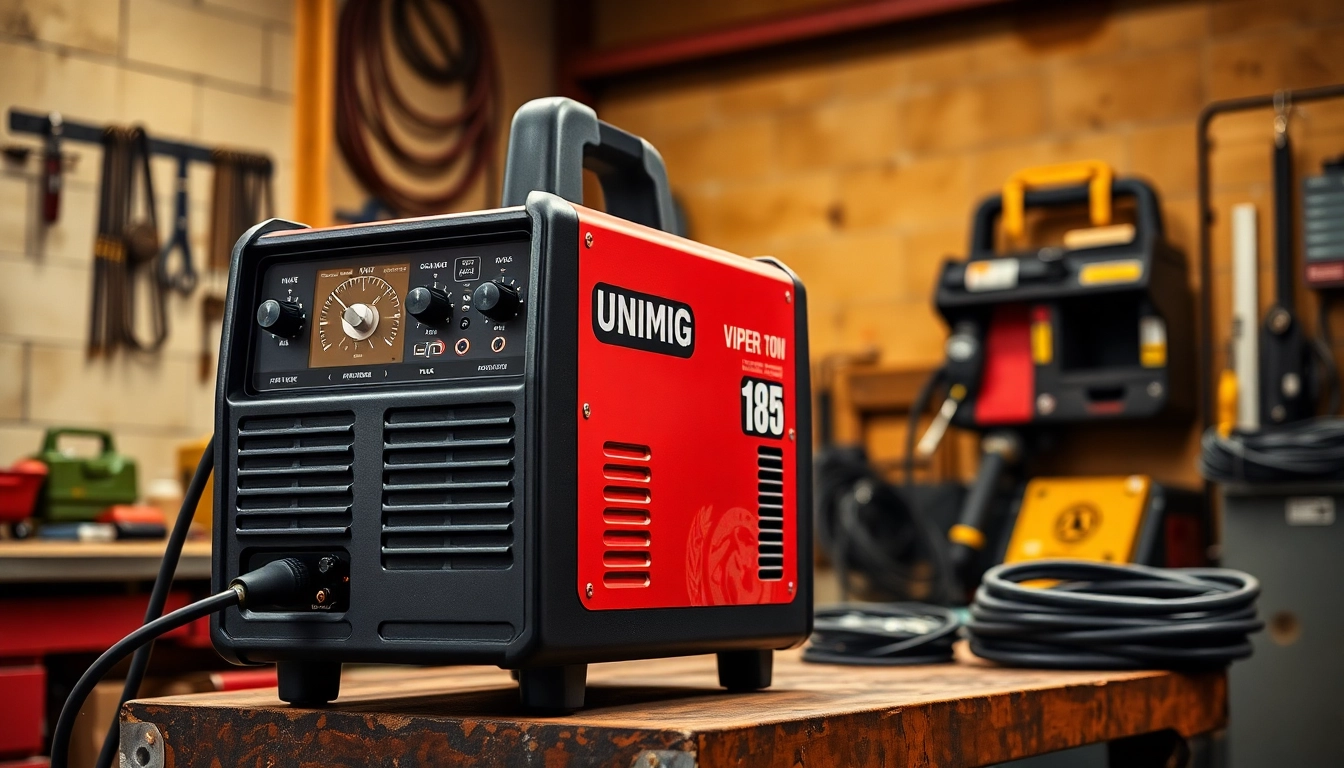Understanding AC DC TIG Welders
TIG (Tungsten Inert Gas) welding is known for its precision and high quality, making it an ideal choice for a variety of metals, including stainless steel, aluminum, and even exotic metals like titanium. One of the crucial tools for achieving these high-quality welds is the AC DC TIG welder. This welding equipment enables users to switch between alternating current (AC) and direct current (DC), allowing for versatility in various welding applications.
In this article, we will explore the functionality, benefits, and applications of ac dc tig welders, assisting both beginners and experienced welders in making informed choices and optimizing their welding experience.
What is an AC DC TIG Welder?
An AC DC TIG welder is a welding machine capable of operating on both alternating current and direct current. This dual functionality is advantageous for welders because different metals and welding scenarios benefit from different types of current. AC is generally used for welding aluminum and magnesium, owing to its cleaning action that removes oxides, while DC is preferred for welding steel and other metals due to the stable and strong arc it provides.
The mechanism of an AC DC TIG welder allows for precise control over the welding process, enabling welders to create strong, high-quality joints. The option to switch between AC and DC is facilitated by an internal switch that alters the voltage and frequency of the input current, giving the welder flexibility in handling different applications.
Benefits of AC vs. DC in TIG Welding
Understanding the benefits of alternating and direct current is crucial for welders who want to achieve the best results.
- Alternating Current (AC): AC is particularly effective for welding aluminum because it can remove the oxide layer on the metal surface, which must be cleaned before welding can occur. The polarity switch inherent in AC current allows it to alternate between positive and negative charges, enhancing the arc stability and cleaning action.
- Direct Current (DC): DC is favored for welding ferrous materials such as mild steel because it creates a more focused and stable arc. This not only enhances penetration but also prolongs tungsten electrode life, making it a preferred option for welding processes that require heat input.
Key Features to Look For
When selecting an AC DC TIG welder, several key features should be considered to ensure optimal performance:
- Output Range: Welding machines that offer a wider output range allow for greater versatility among different thicknesses and types of materials.
- Duty Cycle: The duty cycle indicates how long the welder can operate before needing to cool down. Choosing a welder with a high duty cycle (typically expressed in percentage) is essential for longer welding jobs.
- Control Features: User-friendly controls such as digital displays, adjustable heat settings, and pulse options enhance the accuracy and ease of the welding process.
- Portability: For mobile welders, lightweight and portable models can make transporting equipment simpler, particularly for job sites.
- Quality of Accessories: Look for machines that come with quality accessories including a robust torch, foot pedal, and necessary safety gear.
Top Applications for AC DC TIG Welders
AC DC TIG welders are widely used across various industries owing to their versatility. Let’s explore some of the key applications.
Welding Aluminum: Why AC is Crucial
Aluminum is a popular application for AC DC TIG welders due to the need for a cleaning cycle associated with its oxide layer. The AC current effectively strips this layer, allowing for a clean and effective weld. This is pivotal in various industries such as aerospace, automotive, and marine, where aluminum is commonly used.
Jobs requiring precise metal work happen often in fabrication shops and manufacturing facilities, making a high-quality AC output indispensable for producing structural frames and components where aesthetics are equally important as strength.
Stainless Steel and Carbon Steel Welding
When it comes to stainless steel and carbon steel, DC current provides the focused heat necessary for thorough penetration and strong welds. Applications range from pressure vessels and piping systems to automotive exhaust systems. AC DC TIG welders equipped with DC capabilities allow for nuanced welding adjustments that cater to the variety of grades and thicknesses in steel applications.
Welders equipped with AC/DC functionality can easily switch between aluminum and steel tasks, enhancing versatility and reducing the need for multiple machines.
Special Materials: Copper and Titanium Welding
Also applicable for specialty materials, AC DC TIG welders can handle copper and titanium, which require precise welds due to their unique thermal properties. Copper welding necessitates careful heat management due to its high thermal conductivity, and titanium welding often calls for an inert gas shield to prevent contamination.
Thus, an effective AC DC TIG welder is an asset in specialized fabrication, enabling welders to deliver high-tensile results in fields such as aerospace and medical device manufacturing.
How to Choose the Best AC DC TIG Welder
Selecting the right AC DC TIG welder is critical for achieving your welding objectives. Here are factors to consider during your selection process:
Assessing Your Welding Needs and Environment
Understanding the specific needs of your welding projects is vital. For instance, if you mainly work with aluminum or thin materials, an AC capability may be paramount. Evaluating the environment where you’ll be performing the welding – whether in a shop, outdoors, or in a remote location – will also influence your choice, particularly regarding portability and power sources.
Budget Considerations for TIG Welders
Your budget will significantly narrow down options. While it’s tempting to go for high-end models with all the bells and whistles, cost-effective machines often deliver more than sufficient results for hobbyists and small businesses. Researching the market and potential brands will help identify reliable options within your budget.
Brand Comparisons: What to Know
Brand reputation and service options can influence your choice. Established brands often provide warranties, customer support, and comprehensive service centers, ensuring reliability and maintenance ease. Compare specifications and known issues with different models to help guide your decision.
Maintenance Tips for AC DC TIG Welders
Common Issues and Troubleshooting
It is imperative to stay aware of common problems such as gas leaks, erratic arcs, or contamination on the tungsten electrode. Identifying these issues promptly can save both time and materials. Regular inspections of connections and hoses can help mitigate most operational challenges.
Regular Maintenance Practices
Routine cleaning and inspections are essential for maintaining your welder’s effectiveness. Ensure the torch is clean, the tungsten electrodes are properly ground, and the cooling system is functioning correctly. Keeping the equipment in a dry environment also prevents moisture-related issues, ensuring longevity.
Extending the Life of Your Welder
To extend the lifespan of your AC DC TIG welder, consider implementing a schedule for regular maintenance checks. Paying attention to duty cycle recommendations and avoiding prolonged use beyond the manufacturer’s specifications can prevent overheating and wear. Investing in quality accessories can also significantly enhance the performance and lifespan of the welding machine.
Community Insights: What Users are Saying
Community feedback is an invaluable resource when considering the purchase of a welding machine. The user experience can provide insights into reliability, performance, and satisfaction factors.
Popular Recommendations from Welders
Many welders suggest brands that offer a solid reputation in customer service alongside performance. Models like the PrimeWeld TIG225X and Everlast PowerTIG series often top recommendation lists for their balance of affordability and capability.
User Reviews: Comparing Models
When comparing models, online platforms such as Reddit and welding forums offer user reviews that can authenticate claims made by manufacturers. Frequent discussions about the performance metrics of different models, ease of use, and overall satisfaction can shed light on biases.
Latest Trends in AC DC TIG Welding Technology
Recent advancements in AC DC TIG welding technology have introduced features like inverter technology, which enhances efficiency and reduces power consumption. Furthermore, digital pulse controls enable more precise welding, ultimately improving quality for users tackling new and challenging materials.
The rising trend of portable arc technology is also populating welding applications across various industries, leading to greater flexibility in the field.
Conclusion
Choosing the right AC DC TIG welder can profoundly affect your welding quality and efficiency. Whether you are a hobbyist or an experienced professional, understanding the principles behind AC/DC operation and maintaining your welder will enhance your performance and outcomes. By selecting a machine that aligns with your specific needs and conducting proper maintenance, you can minimize disruptions and maximize productivity while ensuring your projects yield high-quality results.



